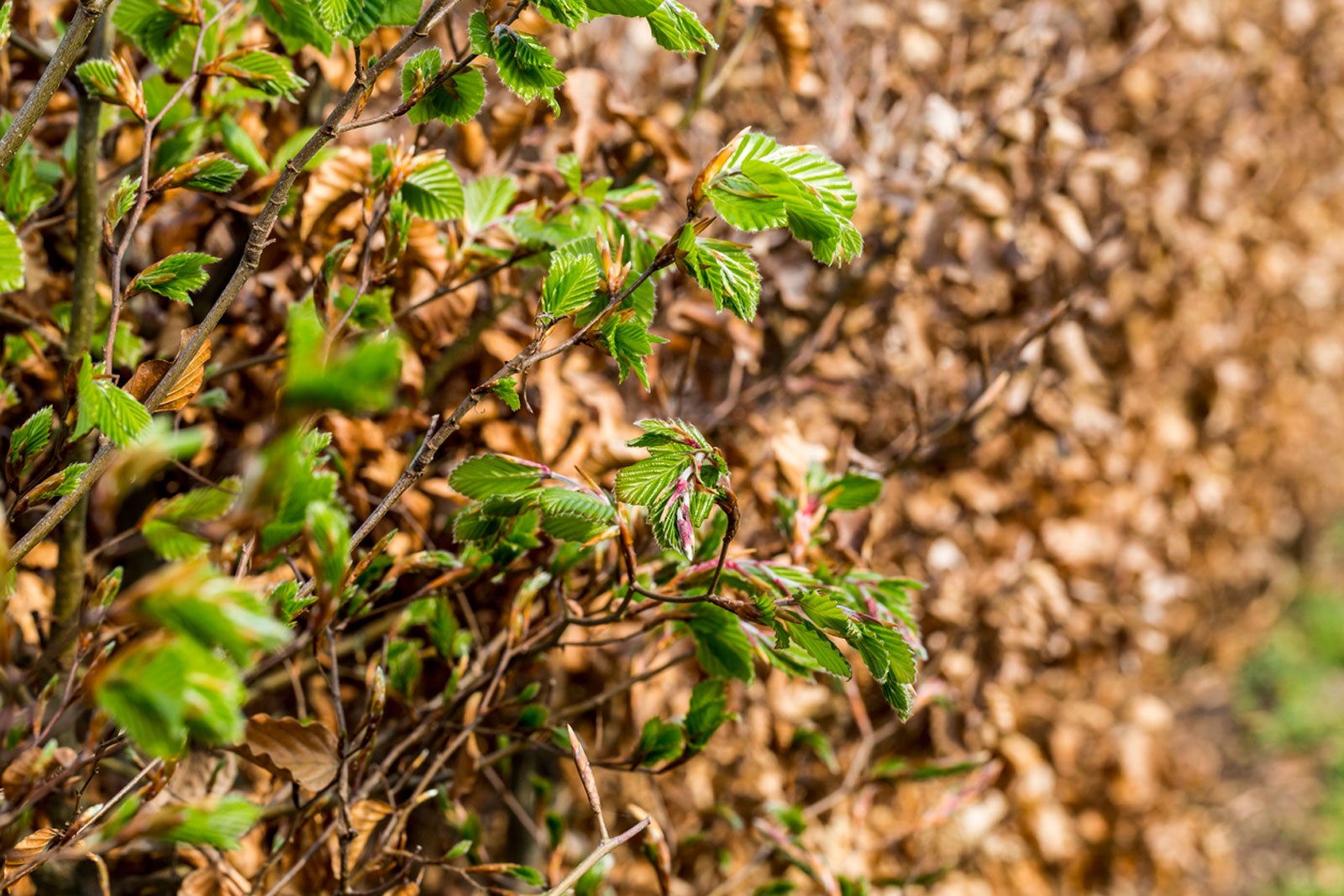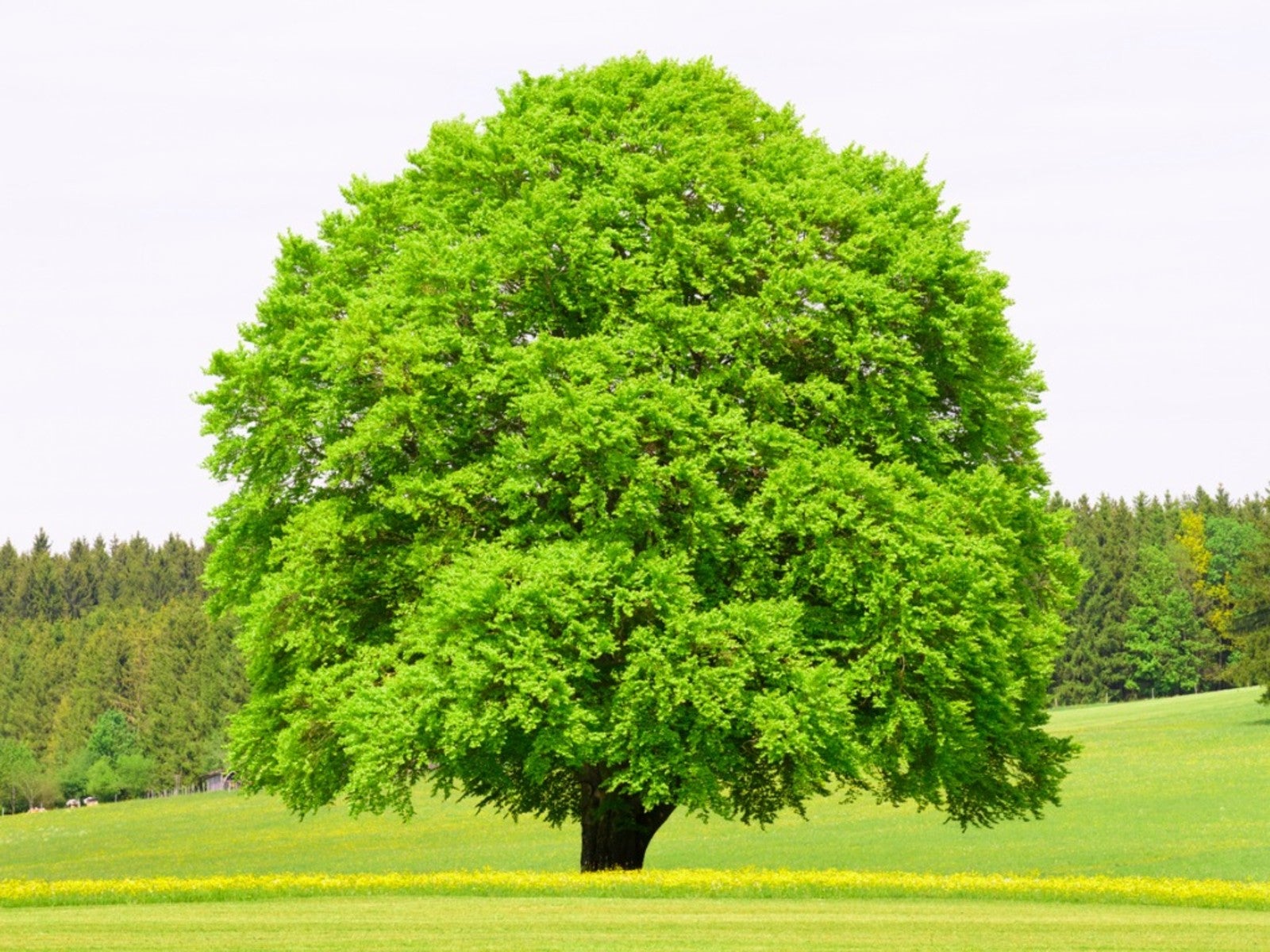Trimming Beech Hedges – How To Prune Beech Hedge Trees


Having a tidy property is one reason for trimming beech hedgerows. Left untrimmed, beech hedge plants would return to their natural state as scraggly bushes or trees. There are other reasons for homeowners to learn how to prune beech hedge.
Regularly pruning and trimming beech hedges encourages more branches and leaves to grow. This translates to a fuller hedge with fewer gaps or bald spots. Likewise, pruning at the correct time of year allows beech hedge plants to retain their foliage throughout the winter.
How to Prune Beech Hedge
Select the best tool for the job. Firing up the hedge trimmer may get the job done quicker, but rough-hewed leaves can turn brown and leave the beech hedgerow looking unattractive. The recommended tool for trimming beech hedges would be pruning shears or hand pruners.
Set up a string guide. If you're looking for professional quality results, you'll want the top and sides of the hedge to look level and even when you're finished. Using a guide makes it easier to achieve those goals.
Start with the top of the hedge, then do the sides. After leveling the top of the hedge, work down the side of each plant from top to ground level. Taper the beech hedge plants outward like the letter “A.” This allows light to reach the lower branches and encourages leaf coverage near the bottom.
Prune each shoot individually. The optimal place to cut each branch is near a bud. Cut at an angle so the lowest part of the cut is near the base of the bud and the upper part is slightly above the bud.
Clean up the trimmings. Clean as you go or rake up the trimmings when you're done to give the hedgerow a tidy appearance.
Gardening tips, videos, info and more delivered right to your inbox!
Sign up for the Gardening Know How newsletter today and receive a free copy of our e-book "How to Grow Delicious Tomatoes".
Best Time to Prune Beech Hedge
To maintain an established beech hedgerow, the second week of August (Northern Hemisphere) is the best time to prune. Beech hedges will produce a flush of new leaves in response to the trimming. This foliage will remain on the beech hedgerow plants for the winter. For bushier hedges, an additional trimming at the beginning of June is recommended.
For a newly planted beech hedgerow, lightly trim the terminal growth bud off each shoot at the time of planting. This will encourage branching. Repeat this process during the first two winters when the plant is dormant and in August of second summer. By the third season, the hedgerow will be established. At that time, trimming beech hedges every summer can begin.
For neglected and overgrown hedgerows, hard pruning should be reserved for winter months when the plants are dormant. The best time to prune beech hedge that's overgrown is in February for the Northern Hemisphere. Reducing the height and width by half won't compromise the beech hedgerow. However, when trimming beech hedges this hard, it's best to do the top and one side the first winter and the remainder the following winter.
Routinely trimming hedgerows will not only keep them bushy and attractive looking, but it also provides gardeners with the means to control the height and width of the hedgerow.

Laura Miller has been gardening all her life. Holding a degree in Biology, Nutrition, and Agriculture, Laura's area of expertise is vegetables, herbs, and all things edible. She lives in Ohio.
-
 Looking For Plants To Give You The Soft And Fuzzies? Try These 5 Fuzzy Leaf Plant Options
Looking For Plants To Give You The Soft And Fuzzies? Try These 5 Fuzzy Leaf Plant OptionsLovers of texture, drama, silver foliage and tactile plants will adore these special sensory garden additions. These fuzzy leaf plant options will leave you all aglow
By Susan Albert
-
 Get Ready For A Summer Of Hummers! Grow These Full Sun Hummingbird Plants and Flowers
Get Ready For A Summer Of Hummers! Grow These Full Sun Hummingbird Plants and FlowersIf you’re lucky enough to enjoy a sunny backyard, make sure you are maxing out on your pollinator opportunities and grow these full sun hummingbird plants and flowers
By Tonya Barnett
